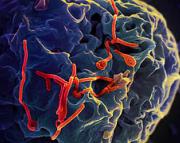Could Ebola come to USC?
Listen to the full audio story
- Ebola WH.mp3

Quarantine stations set up at airports across the United States weren't enough to keep Ebola from breaching U.S. borders. The first confirmed case of the virus in the U.S. has sparked discussion surrounding how to contain, prevent, and treat Ebola. Because the diagnosed patient came into contact with over 100 people, the mainstream media has created intense conversations about the likelihood of an Ebola outbreak in the U.S.
The virus is not spread through the air, but rather through bodily fluids and raw meat. Those in contact with an infected person have a greatly increased chance of contracting the illness, and symptoms of the infection can manifest anywhere from one week to 21 days after exposure to the virus. People most at risk include the family members and healthcare providors who are in close contact with the patient.
As of now, there are no new confirmed cases of Ebola in the U.S., but that hasn't stopped speculation that the deadly disease could spread rapidly if is it not quickly contained. It sparks the question: How at risk is the general public, and how can we stop the spread of disease? Associate Professor at the USC Keck School of Medicine, Paula Cannon, gives her expert opinion on how USC students can keep themselves healthy and safe from the virus.
Check out the future home of Annenberg student media:

Wallis Annenberg Hall
(opening Fall 2014)

